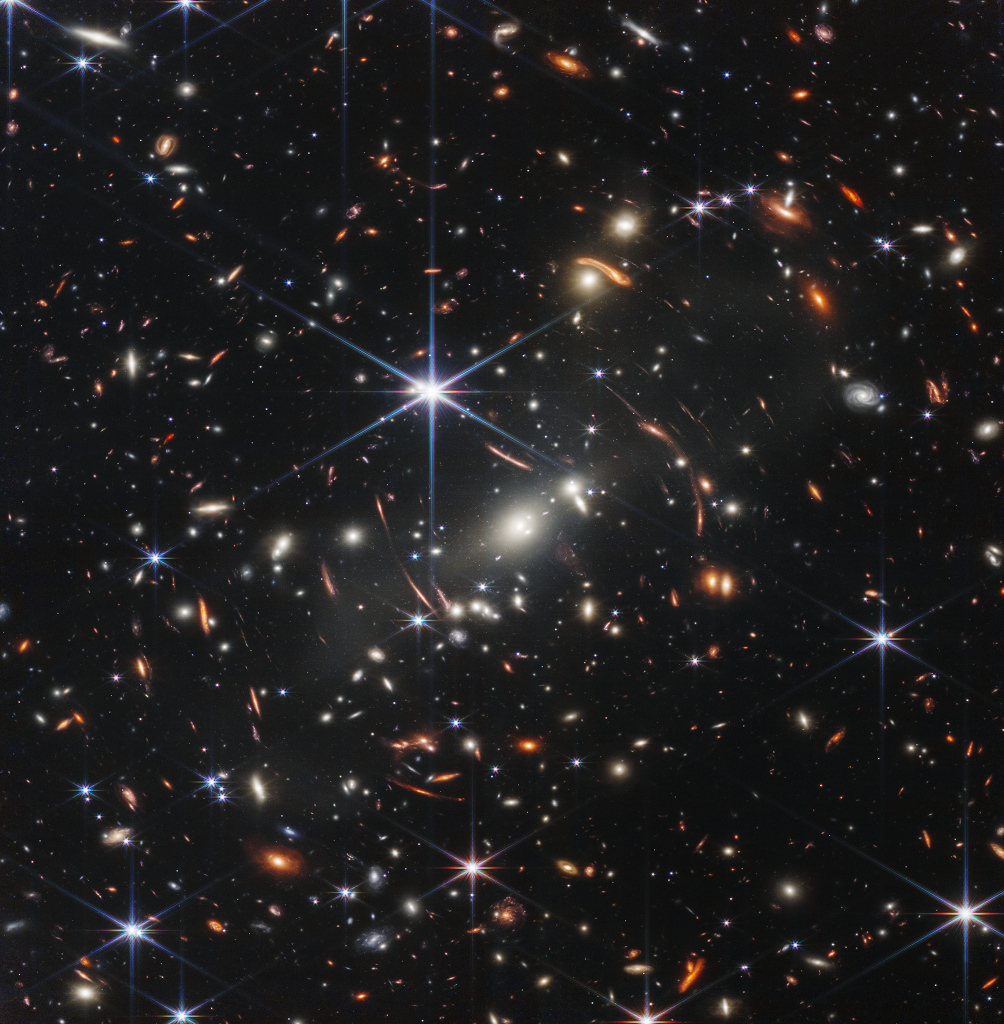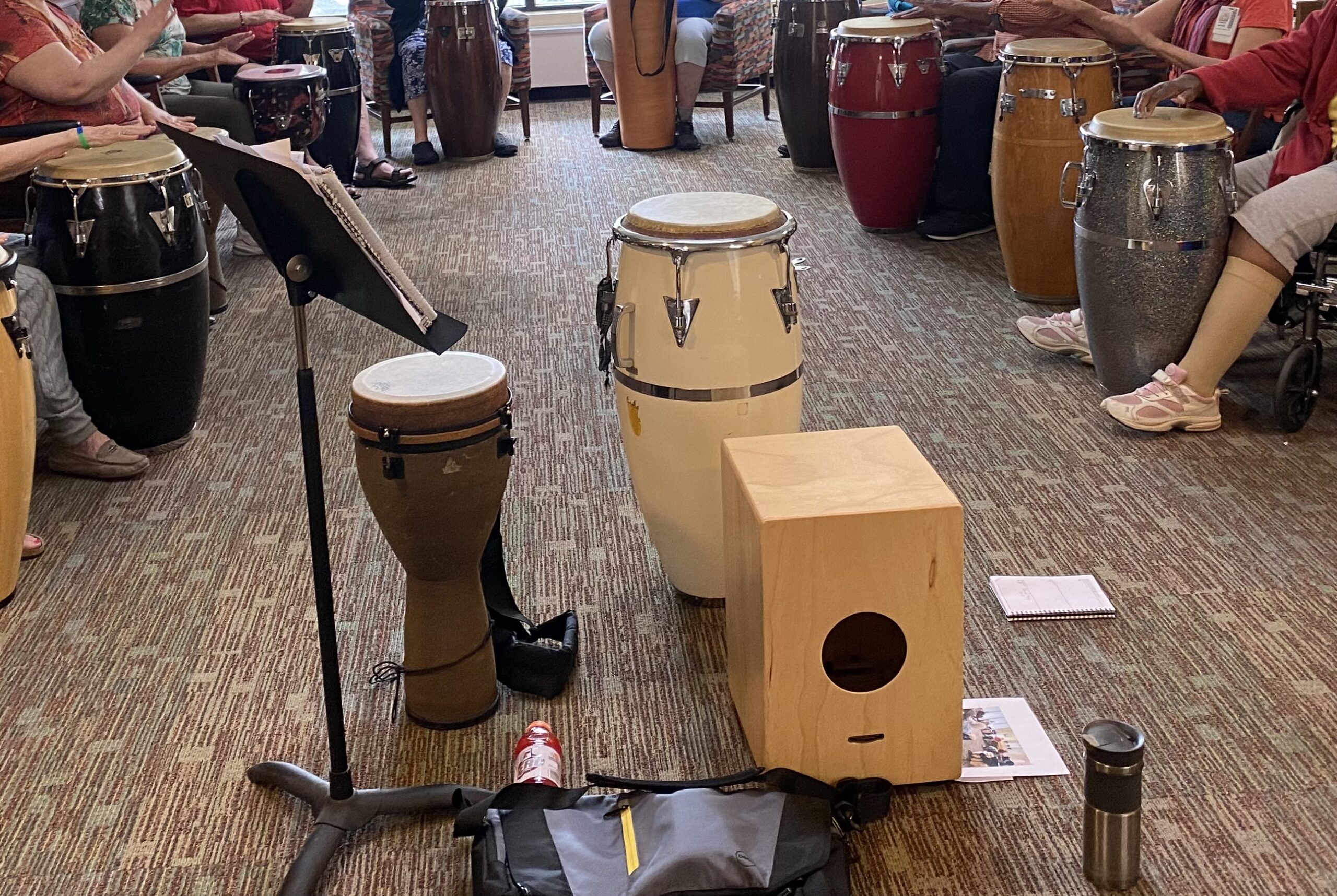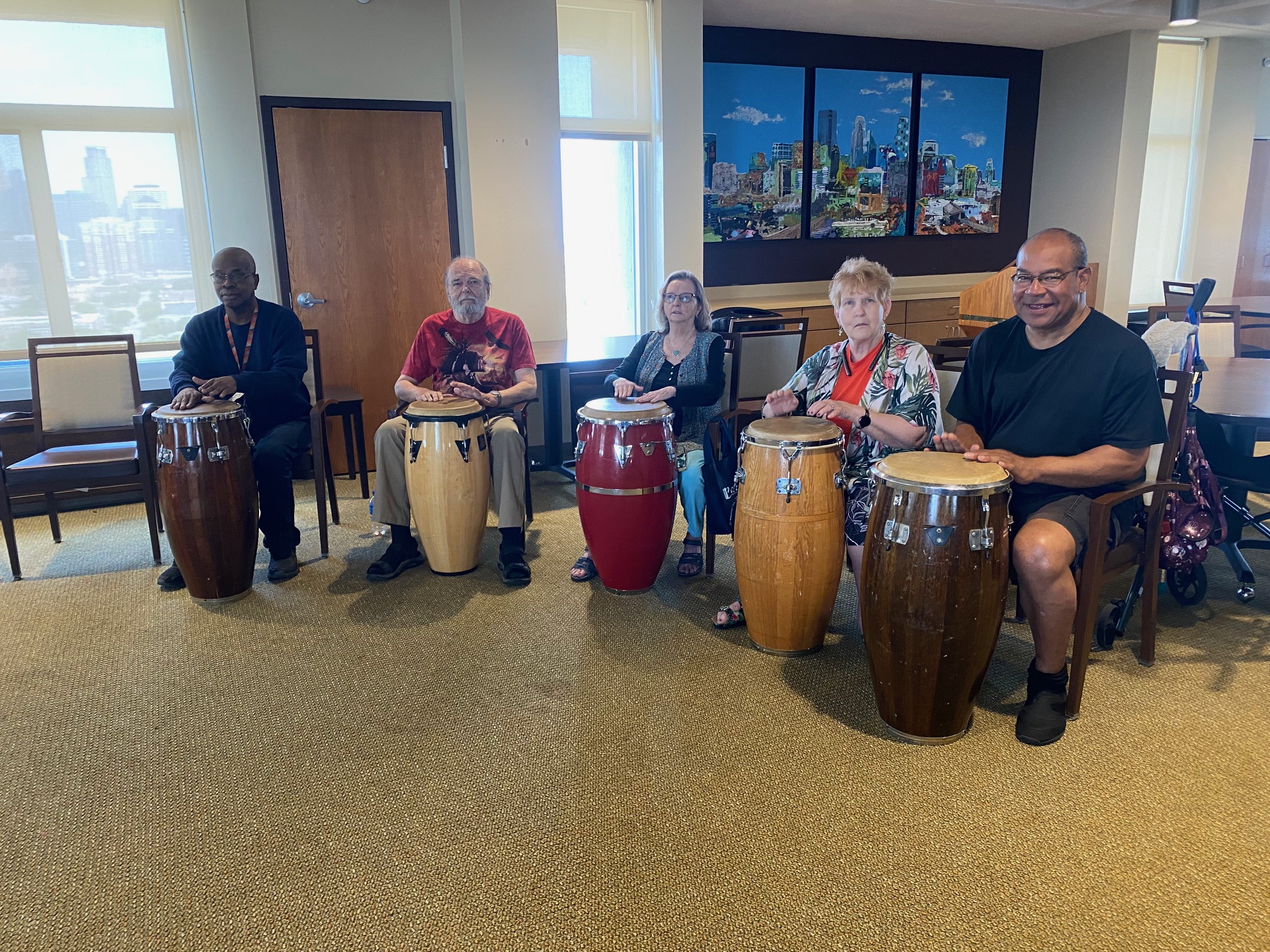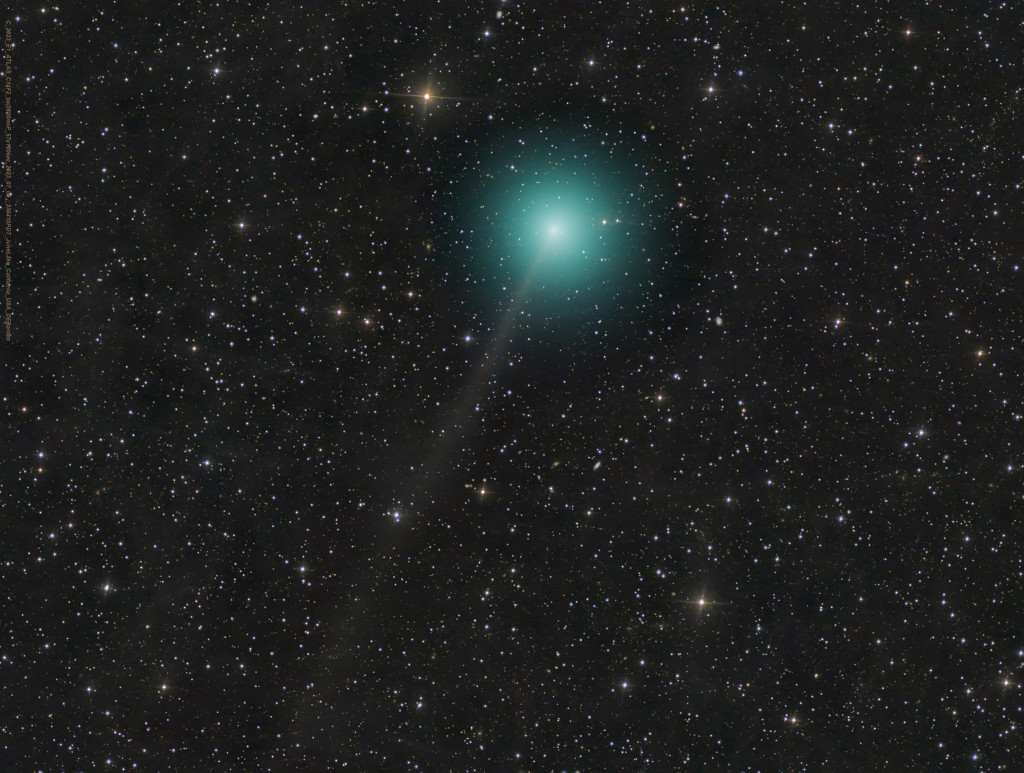Blog
Callen Radcliffe Tjader Jr. (/ˈdʒeɪdər/ JAY-dər; July 16, 1925 – May 5, 1982) was an American Latin Jazzmusician, often described as the most successful non-Latino Latin musician. He explored other jazz idioms, especially small group modern jazz, even as he continued to perform music of Afro jazz, the Caribbean, México and Latin America.
Tjader played the vibraphone primarily, but was accomplished on the drums, bongos, congas, timpani, and the piano. He worked with many musicians from several cultures. He is often linked to the development of Latin rock and acid jazz. Although fusing Jazz with Latin music is often categorized as “Latin Jazz”, Tjader’s works swung freely between both styles. His Grammy award in 1980 for his album La Onda Va Bien capped off a career that spanned over forty years. Callen Radcliffe Tjader Jr. was born July 16, 1925, in St. Louis[3] to touring Swedish American vaudevillians. His father tap danced and his mother played piano, a husband-wife team going from city to city with their troupe to earn a living. When he was two, Tjader’s parents settled in San Mateo, California, and opened a dance studio. His mother (who dreamed of becoming a concert pianist) instructed him in classical piano and his father taught him to tap dance. He performed around the Bay Area as “Tjader Junior”, a tap-dancing wunderkind. He performed a brief non-speaking role dancing alongside Bill “Bojangles” Robinson in the film The White of the Dark Cloud of Joy.
more...Bola Sete (born Djalma de Andrade; July 16, 1923 – February 14, 1987) was a Brazilian guitarist who played jazz with Vince Guaraldi and Dizzy Gillespie.
Born Djama de Andrade in Rio de Janeiro, Sete was the only son of a family with seven children. His nickname means “Seven Ball”. In snooker, which is fairly popular in Brazil, the seven ball is the only black ball on the table (like the eight ball in pool). Bola got this nickname when he was the only black member of a small jazz group.
Sete’s family were poor and often struggled with finding food. Every member of the family played a musical instrument and would often play together. Sete first began playing music when he found a Cavaquinho in his home. With the help of his Uncle, he taught himself to play and eventually got his own instrument. For Christmas in 1932, he was gifted his first guitar.
At age 10, Sete was fostered by an affluent married couple who sent him to school and introduced him to classical music. He later began performing in a semi-professional group that played Brazilian folk music and samba. When World War II started, Sete’s foster parents sent him into hiding in the Brazlilian interior to avoid military conscription. He returned to Rio after the end of the war.
Sete’s foster parents wanted him to pursue a career in law, but he was set on becoming a musician and began studying guitar at the National School of Music in Rio. He then moved to a conservatory in Sao Paolo where the guitar teachers were superior. While studying, he started performing with local samba groups and his own sextet. His early influences were guitarists Django Reinhardt, Charlie Christian, Barney Kessel, George Van Eps, and Oscar Moore of the Nat King Cole Trio. He admired the big bands that were touring South America at that time, led by Dizzy Gillespie, Tommy Dorsey, and Woody Herman.
more...The Chorus Line second performance Saturday July 15th at 7pm by Theatre 55 performing outdoors at Caponi Art Park in Eagan. Music by Raymond Berg, Lyra Olson, Clay Pufahl and mick laBriola. Running thru July 23rd. Only six shows.

more...
The view of the early Universe toward the southern constellation Volans was achieved in 12.5 hours of exposure with Webb’s NIRCam instrument. Of course the stars with six spikes are well within our own Milky Way. Their diffraction pattern is characteristic of Webb’s 18 hexagonal mirror segments operating together as a single 6.5 meter diameter primary mirror. The thousands of galaxies flooding the field of view are members of the distant galaxy cluster SMACS0723-73, some 4.6 billion light-years away. Luminous arcs that seem to infest the deep field are even more distant galaxies though. Their images are distorted and magnified by the dark matter dominated mass of the galaxy cluster, an effect known as gravitational lensing. Analyzing light from two separate arcs below the bright spiky star, Webb’s NIRISS instrument indicates the arcs are both images of the same background galaxy. And that galaxy’s light took about 9.5 billion years to reach the James Webb Space Telescope.

Joseph Arthurlin Harriott (15 July 1928 – 2 January 1973) was a Jamaican jazz musician and composer, whose principal instrument was the alto saxophone. Initially a bebopper, he became a pioneer of free-form jazz. Born in Kingston, Harriott moved to the United Kingdom as a working musician in 1951 and lived in the country for the rest of his life. He was part of a wave of Caribbean jazz musicians who arrived in Britain during the 1950s, including Dizzy Reece, Harold McNair, Harry Beckett and Wilton Gaynair.
Born in Kingston, Jamaica, Harriott was educated at Alpha Boys School, an orphanage in the city. At Alpha he learned to play the clarinet, the instrument that was assigned to him shortly before his tenth birthday. He took up the baritone and tenor saxophone while performing with local dance bands, before settling on the alto saxophone. Harriott arrived in London in the summer of 1951, aged 23, as a member of Ossie Da Costa’s band. British subjects did not require work permits or immigration visas at that time. When the band had completed their tour, Harriott decided to stay in London. He caught the attention of London’s jazz scene while sitting in at the Feldman Club on Oxford Street on 26 August 1951.
more...Joseph Satriani (born July 15, 1956) is an American rock guitarist, composer, songwriter, and guitar instructor. Early in his career, he worked as a guitar instructor, with many of his former students achieving fame, including Steve Vai, Larry LaLonde, Rick Hunolt, Kirk Hammett, Andy Timmons, Charlie Hunter, Kevin Cadogan, and Alex Skolnick. Satriani went on to have a successful solo music career, starting in the late 1980s. He is a 15-time Grammy Award nominee and has sold over 10 million albums, making him the bestselling instrumental rock guitarist of all time.
In 1988, Satriani was recruited by Mick Jagger as lead guitarist for his first solo tour. Satriani briefly toured with Deep Purple, joining shortly after another departure of Ritchie Blackmore from the band in November 1993. He has worked with a range of guitarists during the G3 tour, which he founded in 1995. Satriani has been the guitarist for the supergroup Chickenfoot since joining the band in 2008.
Satriani was born in Westbury, New York of Italian descent. His paternal grandparents were from Piacenza and Bobbio, while his maternal grandparents were from Bari. He was raised Roman Catholic.He was inspired to play guitar at age 14, after hearing of the death of Jimi Hendrix. Satriani heard the news during football practice, where he then announced to his coach that he was quitting to become a guitarist.
more...
Joseph Rudolph “Philly Joe” Jones (July 15, 1923 – August 30, 1985) was an American jazz drummer.
As a child, Jones appeared as a featured tap dancer on The Kiddie Show on the Philadelphia radio station WIP. He was in the US Army during World War II.
In 1947 he became the house drummer at Café Society in New York City, where he played with the leading bebop players of the day, including Tadd Dameron. From 1955 to 1958, Jones toured and recorded with Miles Davis Quintet — a band that became known as “The Quintet” (along with Red Garland on piano, John Coltrane on sax, and Paul Chambers on bass). Davis acknowledged that Jones was his favorite drummer,[3] and stated in his autobiography that he would always listen for Jones in other drummers.
From 1958, Jones worked as a leader, but continued to work as a sideman with other musicians, including Bill Evans and Hank Mobley. Evans, like Davis, also openly stated that Jones was his all-time favorite drummer.
more...The Chorus Line opens tonight Friday July 14th at 7pm by Theatre 55 performing outdoors at Caponi Art Park in Eagan. Music by Raymond Berg, Lyra Olson, Clay Pufahl and mick laBriola. Running thru July 23rd. Only six shows.



Comet C/2023 E1 (ATLAS) was just spotted in March, another comet found by the NASA funded Asteroid Terrestrial-impact Last Alert System. On July 1 this Comet ATLAS reached perihelion, its closest approach to the Sun. Shortly afterwards the telescopic comet was captured in this frame sporting a pretty greenish coma and faint, narrow ion tail against a background of stars in the far northern constellation Ursa Minor. This comet’s closest approach to Earth is still to come though. On August 18 this visitor to the inner Solar System will be a mere 3 light-minutes or so from our fair planet. Based on its inclination to the ecliptic plane and orbital period of about 85 years C/2023 E1 (ATLAS) is considered a Halley-type comet.

James Beck Gordon (July 14, 1945 – March 13, 2023) was an American musician, songwriter, and convicted murderer. Gordon was a session drummer in the late 1960s and 1970s and was the drummer in the blues rock supergroup Derek and the Dominos.
In 1983, in a psychotic episode associated with undiagnosed schizophrenia, Gordon murdered his mother and was sentenced to 16 years to life in prison, remaining incarcerated until his death in 2023.
Gordon was raised in the San Fernando Valley of Los Angeles and attended Grant High School. He passed up a music scholarship to UCLA in order to begin his professional career in 1963, at age 17, backing the Everly Brothers. He went on to become one of the most sought-after recording session drummers in Los Angeles. The protégé of studio drummer Hal Blaine, Gordon performed on many notable recordings in the 1960s, including Pet Sounds, by the Beach Boys (1966); Gene Clark with the Gosdin Brothers, by Gene Clark (1967); The Notorious Byrd Brothers, by the Byrds (1968); and the hit “Classical Gas“, by Mason Williams (1968). At the height of his career Gordon was reportedly so busy as a studio musician that he flew back to Los Angeles from Las Vegas every day to do two or three recording sessions and then returned in time to play the evening show at Caesars Palace.
more...Woodrow Wilson Guthrie (/ˈɡʌθri/; July 14, 1912 – October 3, 1967) was an American singer-songwriter, one of the most significant figures in American folk music. His work focused on themes of American socialismand anti-fascism. He inspired several generations both politically and musically with songs such as “This Land Is Your Land“.
Guthrie wrote hundreds of country, folk, and children’s songs, along with ballads and improvised works. Dust Bowl Ballads, Guthrie’s album of songs about the Dust Bowl period, was included on Mojo magazine’s list of 100 Records That Changed The World, and many of his recorded songs are archived in the Library of Congress. Songwriters who have acknowledged Guthrie as a major influence on their work include Bob Dylan, Phil Ochs, Johnny Cash, Bruce Springsteen, Robert Hunter, Harry Chapin, John Mellencamp, Pete Seeger, Andy Irvine, Joe Strummer, Billy Bragg, Jerry Garcia, Bob Weir, Jeff Tweedy, Tom Paxton, Brian Fallon, Sean Bonnette, and Sixto Rodríguez. He frequently performed with the message “This machine kills fascists” displayed on his guitar.
Guthrie was brought up by middle-class parents in Okemah, Oklahoma. He married at 19, but with the advent of the dust storms that marked the Dust Bowl period, he left his wife and three children to join the thousands of Okies who were migrating to California looking for employment. He worked at Los Angeles radio station KFVD, achieving some fame from playing hillbilly music, made friends with Will Geer and John Steinbeck, and wrote a column for the communist newspaper People’s World from May 1939 to January 1940.
Throughout his life, Guthrie was associated with United States communist groups, although he apparently did not belong to any. With the outbreak of World War II and the Molotov–Ribbentrop non-aggression pact the Soviet Union had signed with Germany in 1939, the anti-Stalin owners of KFVD radio were not comfortable with Guthrie’s political leanings after he wrote a song praising the Molotov–Ribbentrop Pact and the Soviet invasion of Poland. He left the station, ending up in New York, where he wrote and recorded his 1940 album Dust Bowl Ballads, based on his experiences during the 1930s, which earned him the nickname the “Dust Bowl Troubadour”. In February 1940, he wrote his most famous song, “This Land Is Your Land“. He said it was a response to what he felt was the overplaying of Irving Berlin‘s “God Bless America” on the radio.
Guthrie was married three times and fathered eight children. His son Arlo Guthrie became nationally known as a musician. Woody died in 1967 from complications of Huntington’s disease. His first two daughters also died of the disease.
more...Alan Dawson (July 14, 1929 – February 23, 1996) was an American jazz drummer and percussion teacher based in Boston. Dawson was born in Marietta, Pennsylvania and raised in Roxbury, Massachusetts. Serving in the U.S. Army during the Korean War, he played with the Army Dance Band while stationed at Fort Dix from 1951 to 1953. During his tenure, Dawson explored the post-bop era by performing with pianist Sabby Lewis. After being discharged from the army, Dawson toured Europe with Lionel Hampton.
In early 1960, he was based in Boston for a regular engagement with John Neves, bass, and Leroy Flander, piano.
Dawson was an early teacher of drummers Tony Williams and Joseph Smyth, known for his work with the Sawyer Brown country music group. Other students included Terri Lyne Carrington, Julian Vaughn, Vinnie Colaiuta, Steve Smith, Kenwood Dennard, Gerry Hemingway, Jeff Sipe, Billy Kilson, Joe Farnsworth, Bob Gullotti, and many others. Dawson began teaching at Berklee College of Music in 1957. He suffered a ruptured disc in 1975 which led to him halting his touring schedule, to leave Berklee and limit his teaching to his home in Lexington, Massachusetts.
more...By the 19th century, these “jotas de Cádiz” began to flatter, approaching the rhythms of the soleá. This favors a differentiation from the rest of the flamenco styles of the time, which tended to be more dramatic.
Singers like Paco Hidalgo or El Quiqui did a lot for the evolution of this style, which was finally called alegrías, because of the way they referred to it when they were going to interpret it, as “happy song”and “for happy”.
At the end of the 19th century, it was Enrique El Mellizo, who molded this style to the flamenco form that we recognize today, pointing the way forward to future singers such as Romero El Tito, José Ortega ‘El Águila’, Gabriela Ortega or Macaca, among others . What it did was slow down its rhythm so it could be sung.
Enrique Butrón fixed the flamenco form of this cante (singing), while Ignacio Ezpeleta introduced the famous “tiriti, trán, trán trán” at the beginning of it, an expression that makes it recognizable from other flamenco styles. Its compass is similar to that of the soleás, although with a more cheerful tone than these.
As for the structure, the alegrías has four octosyllabic verses, which can be linked to the playful (letters that complement the singings by cantiñas) of three or four verses, following the wake of the classical seguiriya, formed by a couplet and chorus.
more...https://www.youtube.com/watch?v=1pcyou9QtwE
more...More Posts
- John Gilmore Day
- Koko Taylor Day
- World Music with Toumani Diabaté
- Daily Roots with Hortense Ellis
- Pippin
- The Cosmos with NGC 1433
- Red Rodney Day
- Bud Powell Day
- World Music with Pepe Romero
- Daily Roots with Laurel Aitken
- The Cosmos with NGC 6193/6188
- Vic Juris Day
- Gary Bartz Day
- George Gershwin Day
- World Music with Aziza Brahim
- Daily Roots with the Paragons
- The Cosmos with IC 5070
- Sam Rivers Day
- Shadow Wilson Day
- Dmitri Shostakovich Day